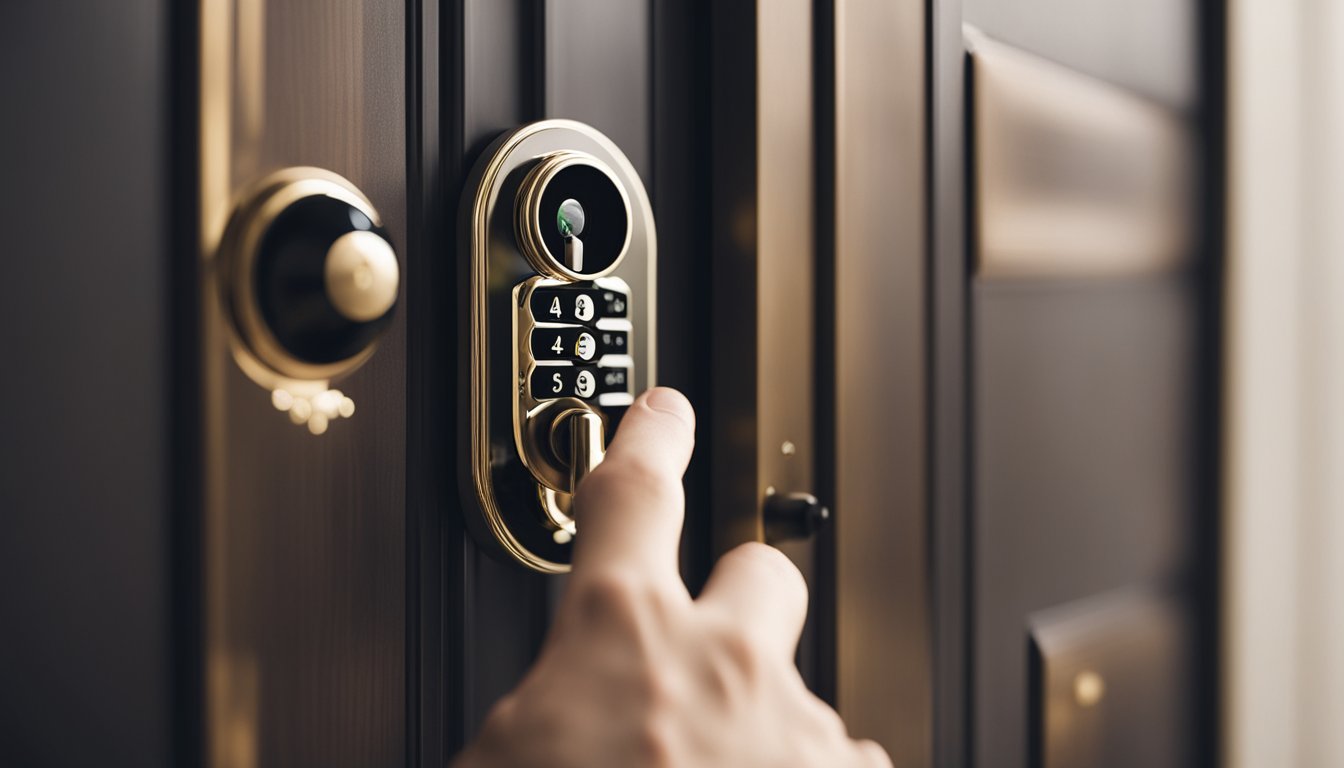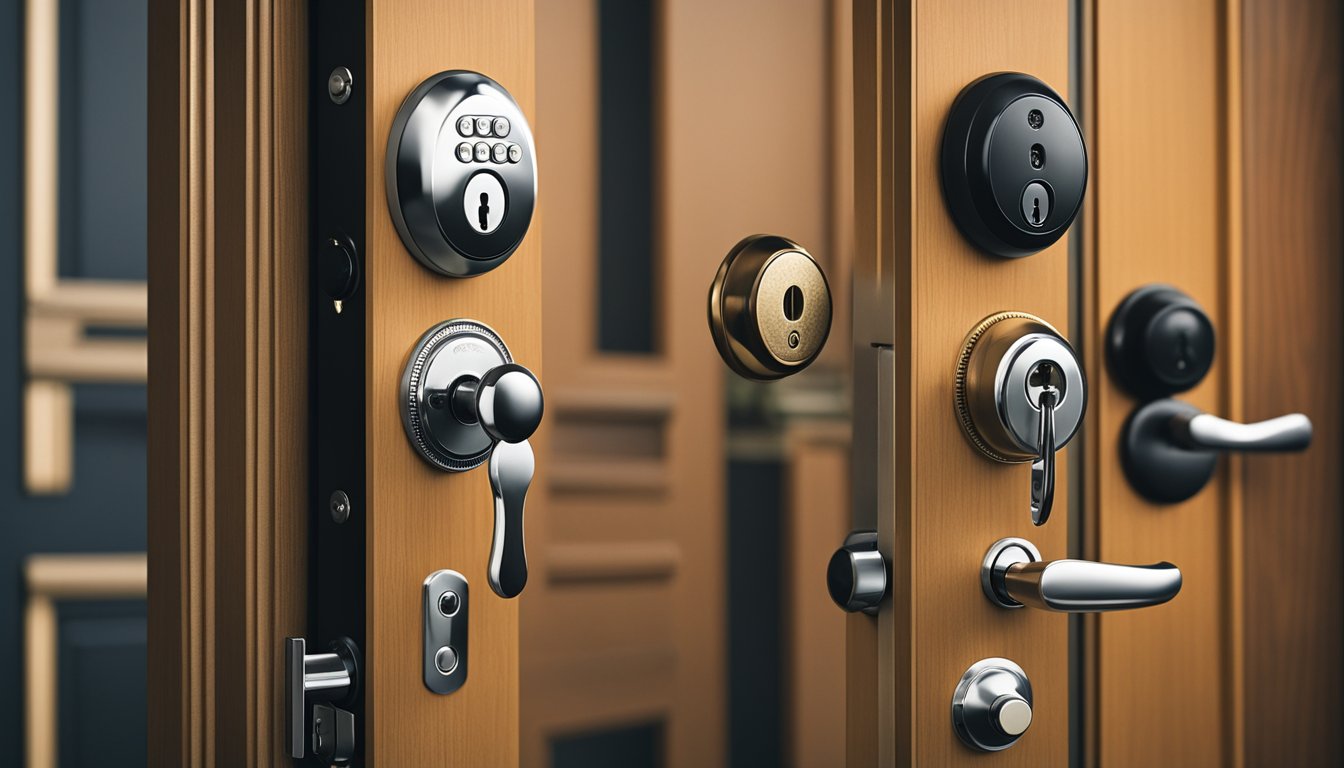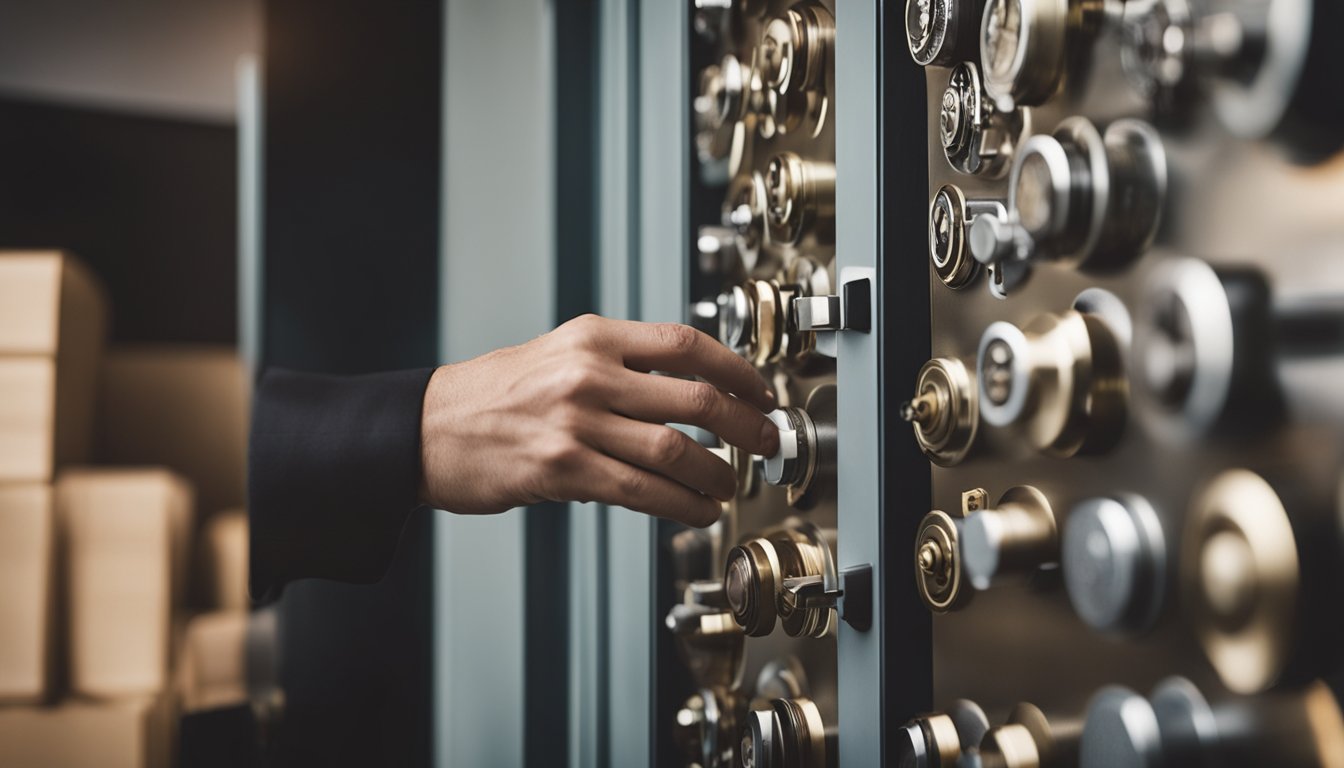Late updated: 06 Aug 2024 12:08
Written by: Elena Prescott
Choosing The Perfect Home Lock Style: Security & Aesthetics Tips
Choosing the perfect home lock style involves balancing security, functionality, and aesthetic appeal. As homeowners, we must consider various factors to ensure our doors not only protect us but also complement the design of our homes. Prioritising security without compromising on style is essential for making an informed decision.

From understanding different lock types to matching the right lock with your door's design, there are numerous elements to think about. By examining the security features and ensuring that the lock's endurance matches the usage, we can choose locks that offer peace of mind. It's not just about the lock; the material, colour, and overall design play significant roles.
Most importantly, we should assess our home's security needs based on the area's crime rate and opt for stronger locks like deadbolts if required. A good lock style doesn't just secure; it adds to the overall look of your home, making it both safe and visually appealing.
Key Takeaways
- Balance security, functionality, and design in lock choice.
- Consider local security needs and opt for durable locks.
- Match lock style with door design for a cohesive look.
Understanding Lock Types and Their Functions
Choosing the perfect lock style for our home involves balancing security, aesthetics, and functionality. From the inner workings of locks to comparing modern smart technologies, understanding the key elements can help us make informed decisions.
Anatomy of a Door Lock
A typical door lock comprises several parts: the lockset, latch bolt, and keyhole. The lockset holds the mechanism, often including a doorknob or lever handle.
The latch bolt extends into the door frame’s strike plate, ensuring the door remains secure when closed.
Materials vary, with brass, stainless steel, and zinc alloy being common.
Attention to the door hardware, like hinges and lock size, is vital. Well-fitted components ensure the overall strength and security of the lock.
A mortise lock integrates into the door, often more substantial and secure. It includes both the lock body and a separate latch bolt. Proper installation of these components ensures optimal performance and durability.
Comparing Deadbolts and Doorknobs
Deadbolts provide robust security by locking a solid latch bolt deep into the door frame. There are single-cylinder and double-cylinder types.
Single-cylinder deadbolts use a key on the outside and a thumbturn on the inside, while double-cylinder options require a key from both sides.
On the other hand, doorknobs often integrate simpler locking mechanisms. While they are convenient and common, their security level is typically lower than deadbolts.
Consider positioning; deadbolts are usually placed above doorknobs for added security. The choice between the two should reflect both security needs and ease of use.
Lever handles can also combine with deadbolt mechanisms to enhance both functionality and aesthetics.
Assessing Smart Locks and Electronic Locks
Smart locks and electronic locks offer advanced features beyond traditional physical keys. Smart locks often connect to a Wi-Fi network or use Bluetooth to allow remote access and monitoring.
Some feature keypads for code entry, eliminating the need for physical keys.
Biometric options like fingerprint scanners provide personalised security. These can store multiple user profiles, making them ideal for families or shared living spaces.
Electronic locks may also include alarm systems that trigger during forced entry attempts. Compatibility with home automation systems can enhance convenience.
Choosing the right type depends on our lifestyle and security requirements. While these modern locks offer impressive convenience, ensuring they are properly installed and maintained is crucial for their effectiveness.
Choosing the Correct Lock Style for Your Home

Selecting the appropriate lock style for your home involves balancing aesthetics, functionality, security, and compatibility.
Enhancing Home Appearance with Stylish Locks
Locks are not only about security; they also play a significant role in enhancing the visual appeal of your home. We have various finishes to choose from, including satin nickel, oil-rubbed bronze, and polished brass, suitable for modern or vintage aesthetics.
Consider the style of your door knobs and lever handles to match your interior design. Matte black and chrome finishes can offer a contemporary look, while glass or brass provide a more vintage feel. The right combination of style and functionality adds value to your home.
Installation and Compatibility Considerations
Proper installation ensures the longevity and performance of your locks. Compatibility with your door is crucial. Measure the thickness of your door to find locks that fit. Some locks are more suited for thicker doors, while others fit standard door sizes.
Do-it-yourself installation can be an option if the locks come with clear instructions and necessary screws. If you’re unsure, professional installation is advisable to ensure everything functions correctly and securely.
Security Features for Peace of Mind
Security features are paramount when choosing locks for your home. Look for security deadbolts for exterior doors, which offer enhanced protection against break-ins. Privacy locks are ideal for bedrooms and bathrooms to ensure personal space without compromising on security.
Emergency egress is necessary for safety. Locks should have a quick and easy way to exit during an emergency. Consider locks with an internal thumb turn mechanism which provides convenience and control, ensuring peace of mind.
Selecting Locks for Different Areas in Your House
Different areas of your home require specific types of locks. Front door locks need to be durable and robust, often combining deadbolts and keyed doorknobs. Interior door knobs may need privacy locks for bedrooms and bathrooms or simple passage doorknobs for general use areas.
Budget-friendly options can still provide quality and performance. Ensure interior locks complement the style and finish of the room. Glossy finishes like polished brass may be suitable for doors requiring a more elegant appearance, while simple black or bronze finishes may be more fitting for a modern, minimalist style.
Frequently Asked Questions

When choosing the perfect home lock style, it's essential to consider various factors such as security, ease of use, aesthetics, and installation processes. Balancing security with convenience is also key when choosing a lock for your home.
What are the main factors to consider when selecting a lock for my home?
Security level is paramount. Evaluating the area's crime rate can influence the choice. For instance, higher crime areas may necessitate stronger locks like deadbolts.
Durability and lock grading (such as ANSI Grades 1 to 3) should also be considered. Grade 1 locks are the most secure and durable.
How do different types of locks vary in terms of security and ease of use?
Deadbolts offer strong security but may be less convenient to operate than knob locks. Mortise locks provide a sturdy option but can be more complex to install. Smart locks offer a blend of security and modern convenience through keyless entry and remote access.
What are the advantages of smart locks over traditional lock systems?
Smart locks provide the flexibility of keyless entry and can be controlled remotely through smartphones. They often feature integration with home automation systems, enhancing convenience and security.
However, it's crucial to consider battery life and cybersecurity measures when choosing a smart lock.
Can the design and finish of a lock impact the overall aesthetics of my door?
Yes, the design and finish of a lock can significantly enhance or detract from your door's aesthetics. Choosing a lock that complements your door’s style and colour can add to your home's visual appeal.
Materials range from brass, nickel, to bronze, each offering a different look and finish.
What should I know about the installation process for various home lock styles?
Installation process varies by lock type. Deadbolts and smart locks might require more technical skills compared to simpler knob or lever locks.
Professional installation may be advisable for complex locks to ensure security and functionality. Always follow manufacturer guidelines for optimal results.
How do I balance the need for security with the desire for convenience in a home lock?
Balancing security with convenience involves selecting a lock that meets your security needs while offering ease of use. For example, a Grade 1 deadbolt paired with a smart lock can provide high security and user-friendly access.
Consider features like auto-locking mechanisms and temporary access codes to blend security with convenience.
